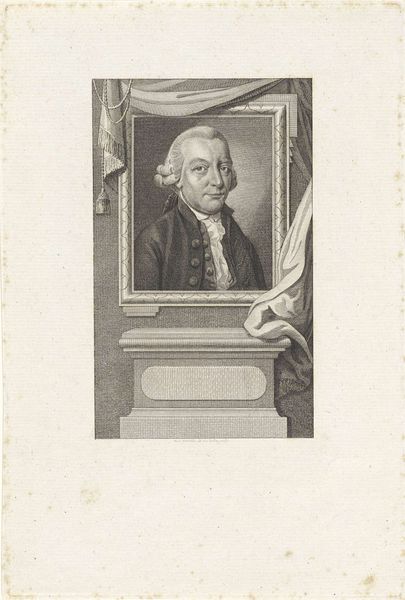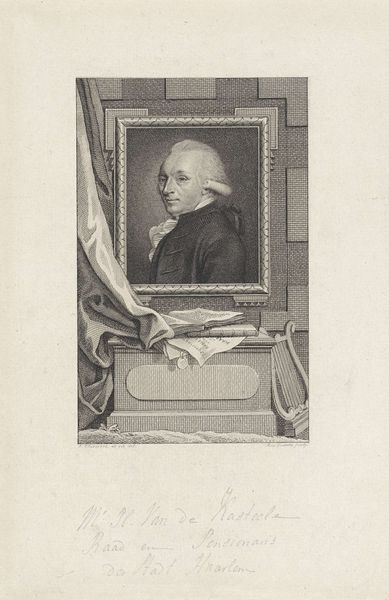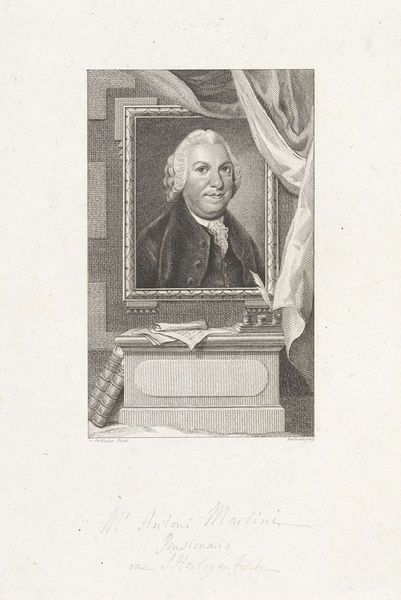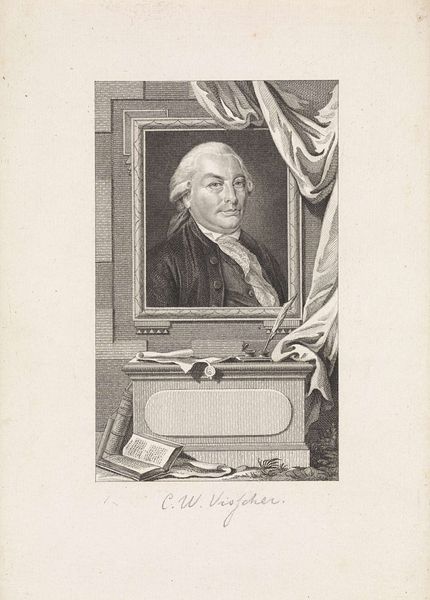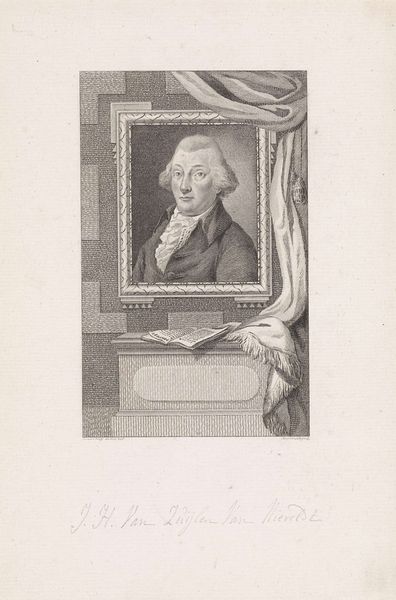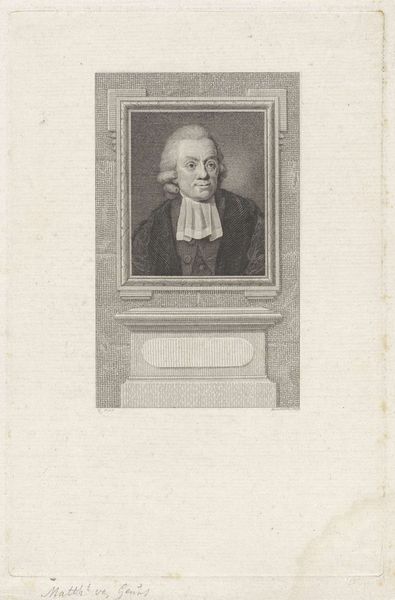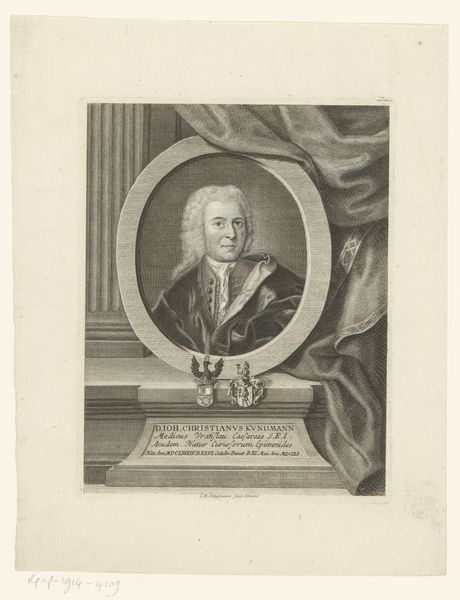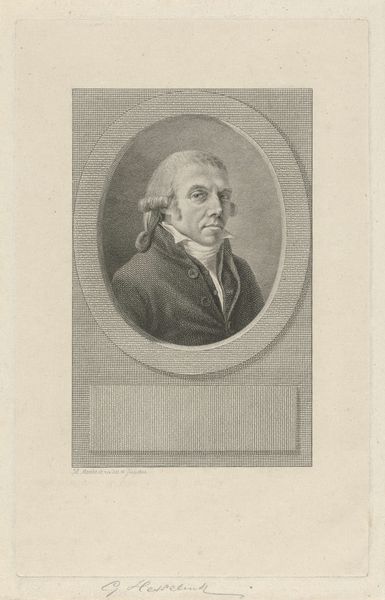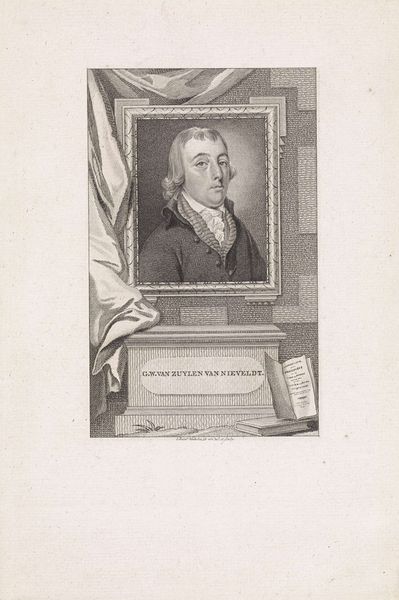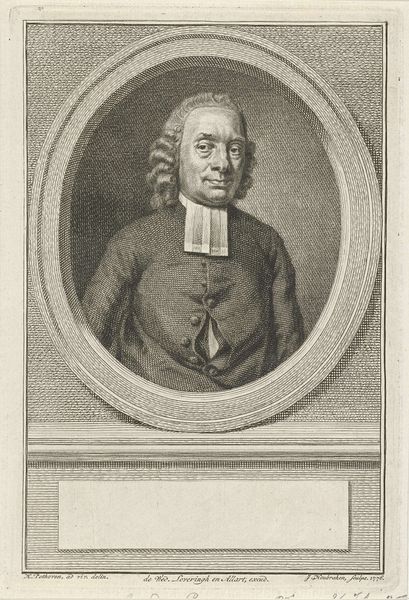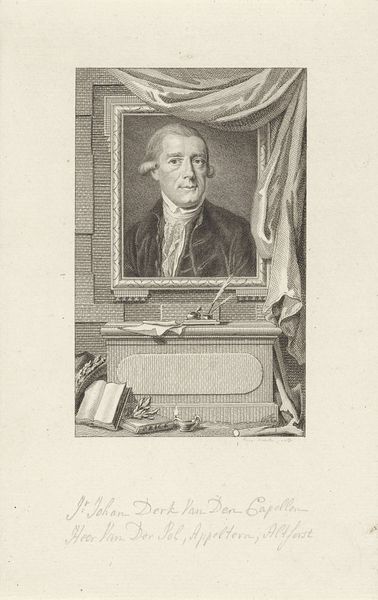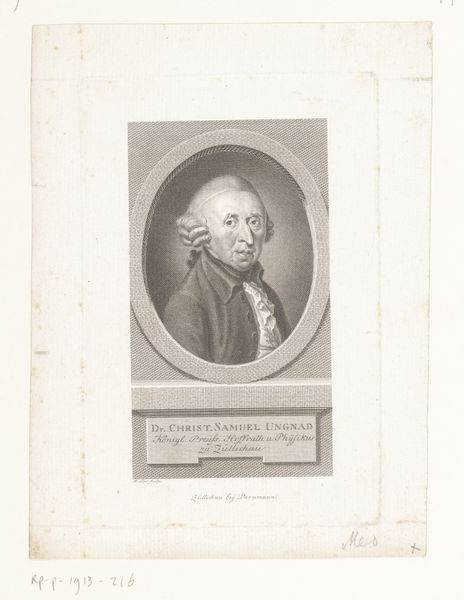
print, paper, engraving
#
portrait
#
neoclacissism
# print
#
paper
#
graphite
#
engraving
Dimensions: height 227 mm, width 157 mm
Copyright: Rijks Museum: Open Domain
Curator: This engraving, dating back to 1787, captures the likeness of Engelbert François van Berckel. It’s currently held at the Rijksmuseum, and was created by Reinier Vinkeles. Editor: It has this severe, almost…oppressive feel. Very formal and quite rigid, despite being just a print on paper. The setting adds to that atmosphere. Curator: Indeed. Van Berckel was an important figure during the Patriot movement in the Netherlands. A key political agitator, you might even say, within the city of Amsterdam. Consider this image through that lens; it’s a statement of power, intended for circulation. The book and quill are calculated props to solidify his place as an intellectual. Editor: Absolutely, the imagery reinforces the ideal of civic virtue – the book’s title almost calls it out: "Huzenga’s Speech, Mark Liberty." And this neat organization of symbols and background items behind a clear depiction of his physical attributes creates an environment which emphasizes the character in question as serious, studious, yet resolute. I find myself questioning if such pieces really encapsulate a person's inner condition or rather simply manufacture it for their society and even their descendants. Curator: And the print medium itself is crucial. It made this image accessible and distributable on a broad scale during that period of upheaval and change. Think of the politics of imagery - the engraving technique allowed for reproductions that could influence public opinion and perceptions about him and the Patriot cause. Editor: So the choice of medium shapes its accessibility and consequently, the possible role it plays as a means of propagandizing specific socio-political messages, which were likely targeted to those who could not interpret their nuanced social origins without contextual help. That is, for a portrait of Van Berckel to persuade some segment of the population during the tumult of conflict. But even without any such analysis it can leave a lasting sense of imposing moral order with its deliberate execution, one can immediately understand it's more than meets the eye, and requires interpretation, reflection on social and even psychological undercurrents for someone like Berckel to commission. Curator: Yes, I think, in examining such portraiture, we glean valuable insights into how individuals like van Berckel strategically cultivated and managed their public persona. Editor: Precisely, and beyond individual ambitions, this image speaks to a wider debate about authority, representation, and even, manufactured dissent, offering rich context and avenues of interrogation, of political influence then, and political commentary now.
Comments
No comments
Be the first to comment and join the conversation on the ultimate creative platform.
